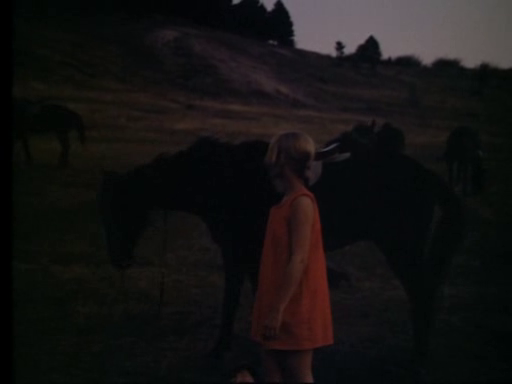
“Jancsó developed the mise en scène in his strenuously physical way, pacing the terrain back and forth in all directions to work out the movements of the performers and those of the camera. Such actions lent themselves to Jancsó’s roaming long shots over people scattered in geographic space – his photo-tography and choreo-calligraphy. It’s an intensely processional film, as groups move in varying formations around, towards or even through one another. When individuals move, it’s always in relation to a group or groups (defying, inspecting or linking them ... ). As brusquely and strictly as he controlled the actors, he kept a sharp eye open for unexpected details, towards which he might, in mid-take, redirect the camera. Since the film was shot silent for subsequent post-synching, Jancsó could talk to the actors throughout the takes. Often, the actors had no idea if they were in shot or not, and whether to act ‘smaller’ because they were in close-up, or ‘larger’ to be legible in long shot. Jancsó shot very fast, averaging a shot a day – no mean feat, since the film has only twenty-eight shots.
The mise en scène interweaves six kinds – or dimensions – of space, movement and change. 1. Most unusual, of course, is the ‘walking choreography’, with its changing body-language (heads bowed thrustingly, impassivity ... ), its changing rhythms, its shifting vectors. 2. There’s also a strong ‘pictorialist’ dimension – the landscape ‘pictures’, often revealed gradually, by the camera shifting around them. 3. The camera movements themselves become a focus of attention, with their own kinesis, as does the apparent movement of the zoom. They’re ‘calligraphic’ in the true sense: the camera lens seems to ‘move across’ the scene as a pen moves across a piece of paper. (Most calligraphic camerawork doesn’t quite do this; unless its movement is especially intricate and persistent, it simply changes the shape of the scene.) 4. The meticulously wrought soundtrack, as when overlaid sounds add ‘aural space’ to visual space, or add a new texture. 5. The words (sparse, piecemeal, oblique), and their ideas, which ‘enlarge’ these local actions to wider patterns of history. Finally, 6. The music, with its moods, suggestions and kinaesthetic tensions.
Around this six-line counterpoint, each landscape in turn becomes an arena, like a theatrical space. (Jancsó went on to adapt Red Psalm for a Budapest theatre.) ‘Theatrical space’ is created not, as often supposed, by a stage or some equivalent enclosure, but by a ‘body of actors’ whose relations assert a visual and diegetic unity. In this respect, Jancsó anticipates Theo Angelopoulos, another figure-in-landscape artist. [...] The generally idyllic picture of rural life, if left to itself and its fertility-ritual religiosity, rather parallels Pasolini’s contemporaneous reflections on popular-traditional rural thought as pre-rationalist and pre-bourgeois. Thus Red Psalm, too, would be nearer Gramsci than Althusser.”
Raymond Durgnat1

